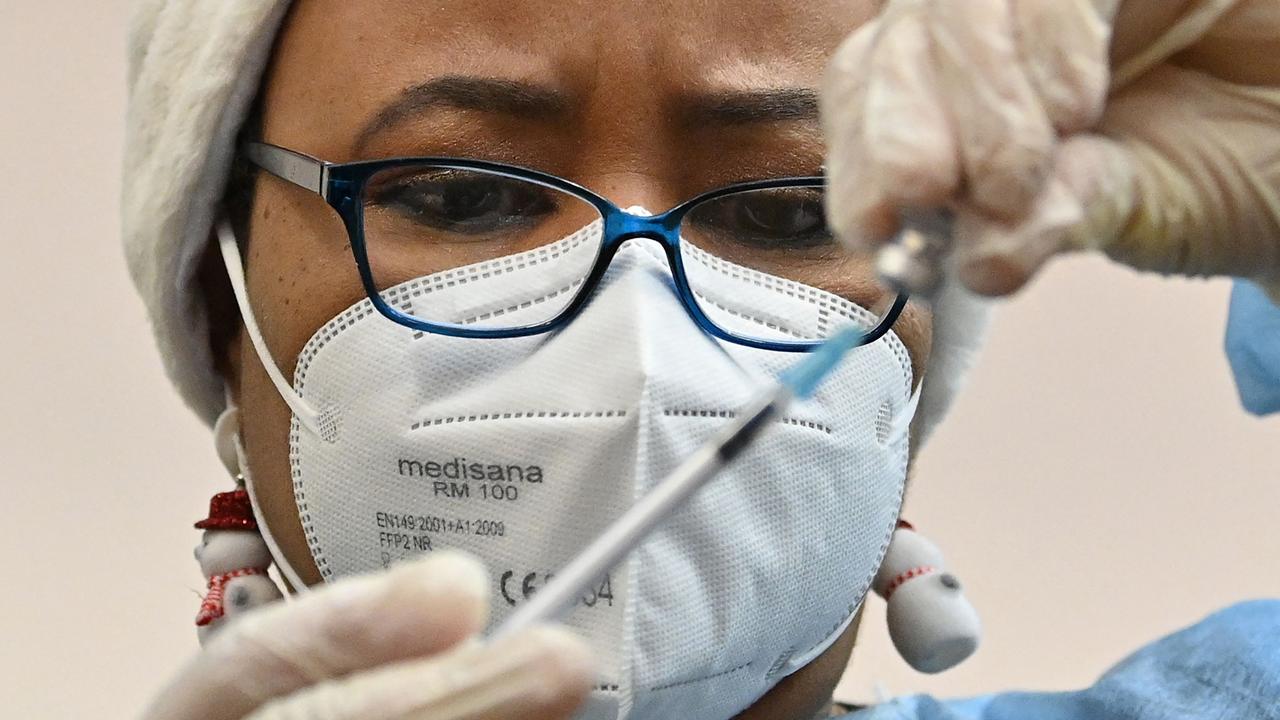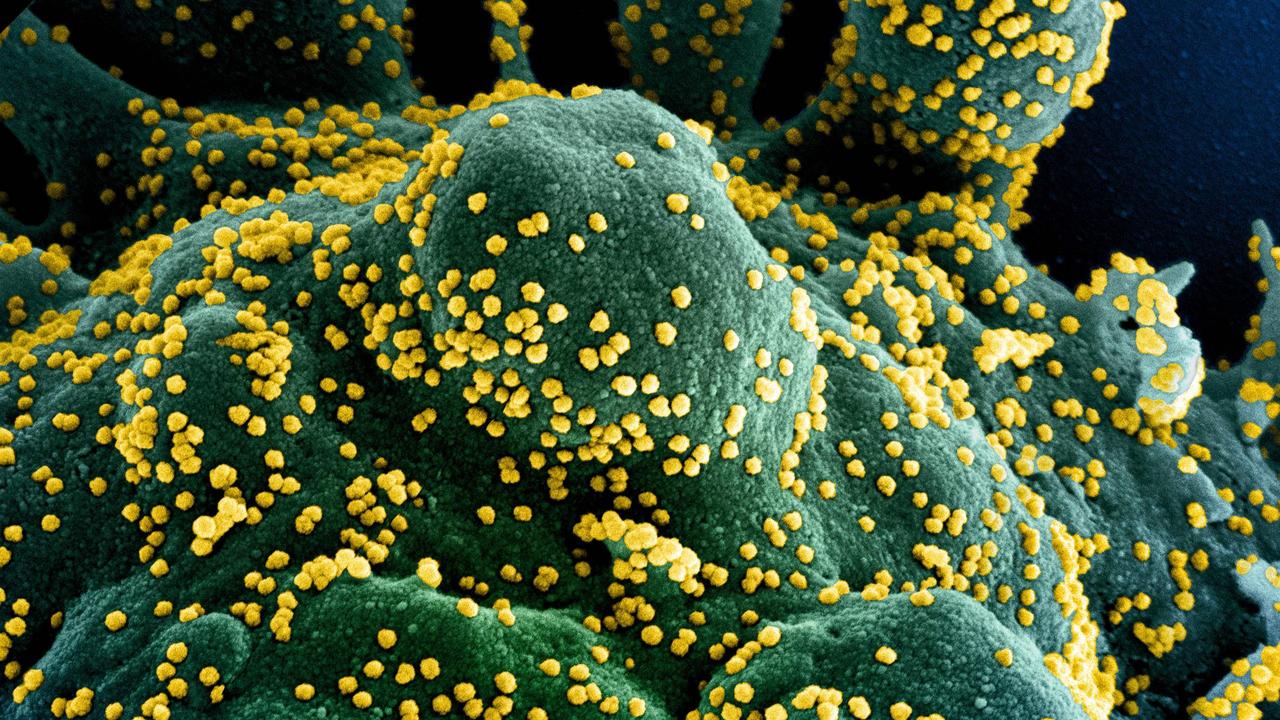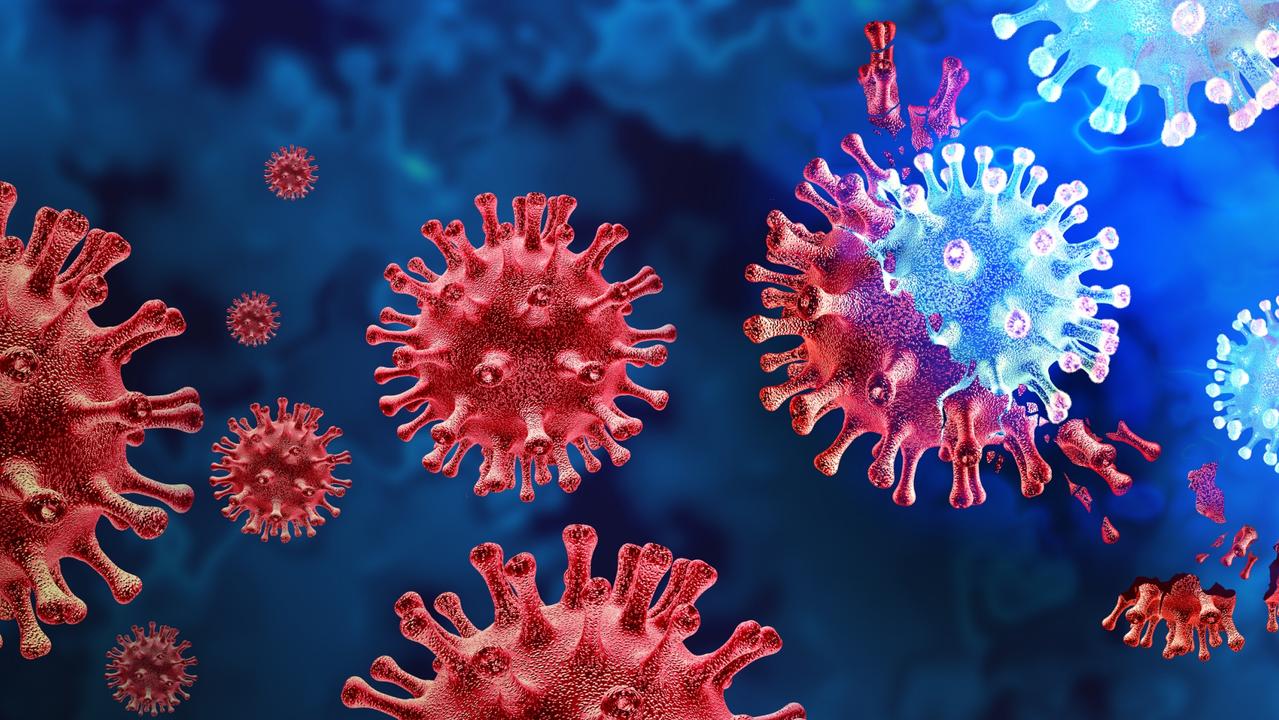How the Omicron Covid variant will change the course of the pandemic
It is better at evading vaccines and much more infectious than Delta. So is Omicron the worst thing to happen in the pandemic, or will it save the world?
It’s been touted by some as the saviour of the world, by others as the harbinger of doom. Just how will the Omicron variant change the course of the Covid pandemic?
As Australia begins to open borders – Queensland is letting in interstate travellers in just a few hours – case numbers in NSW are rising again.
Daily infections had been fairly stable, but on Saturday, there were 560 new cases of community transmission in the state – double the number of a week ago and the highest number in more than two months.
In fact, last week, there were 1667 Covid infections detected in NSW. This week that number is 2605. That’s despite a 93.1 per cent double vaccination rate for people aged 16 and over in the state.
University of South Australia epidemiologist Professor Adrian Esterman said this is “definitely going to be a wave coming up”.
“Now we’re starting to see NSW cases going up and, more importantly, we’re seeing the effective reproduction going up and that’s not a good sign,” he told the ABC.
But while numbers of Omicron cases are still low – there are currently 45 cases of the variant in NSW as well as cases detected in Victoria, Queensland, South Australia, the Northern Territory and the ACT – it is unlikely to stay that way.
While scientists are still scrambling to research the newest variant of Covid-19, what we do know is that it is the most infectious strain to date.
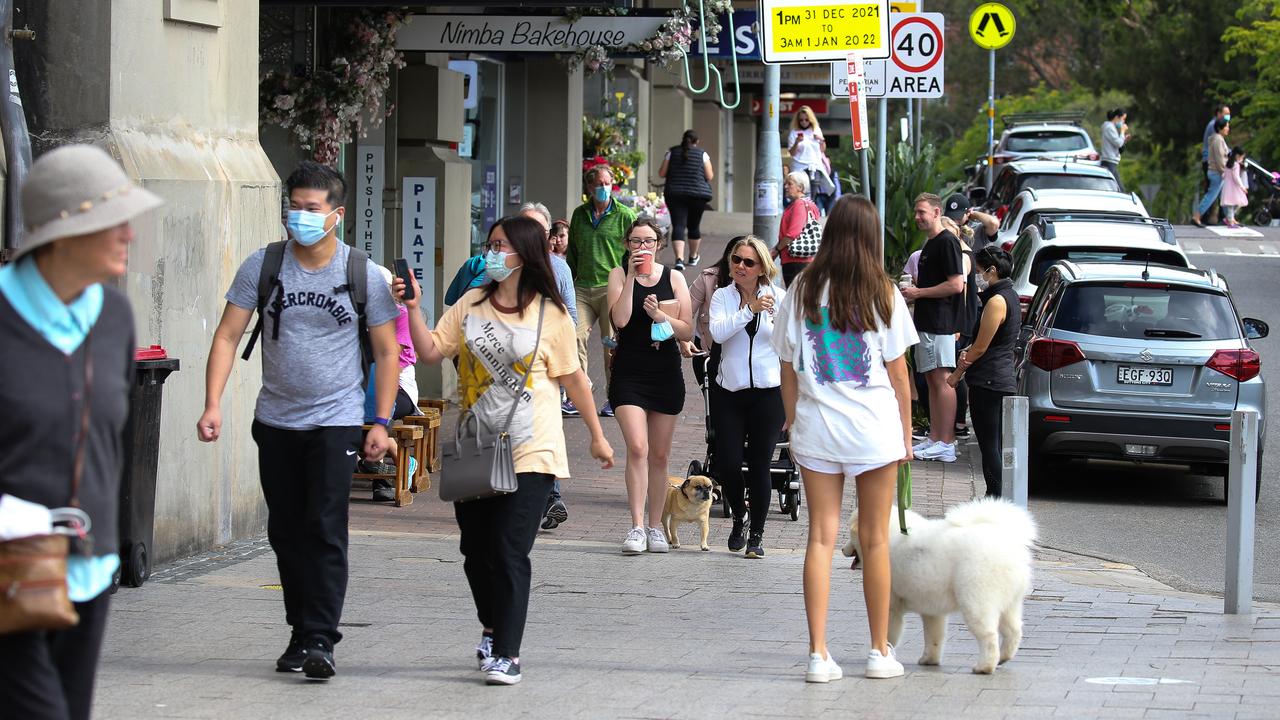
South Africa case numbers explode
The Omicron variant was first detected in Botswana and quickly spread to other countries in southern Africa.
Now, in South Africa where vaccination rates are incredibly low – only 38 per cent of the adult population is fully vaccinated – a new Covid wave is linked to the Omicron strain.
The country is now recording around 20,000 new infections each day. A month ago, on November 15, the country recorded just 136 cases.
And while there have not been any recorded deaths linked to Omicron, it is still proving to be an added pressure on the health care system.
Hospital data shows Covid-19 admissions are rising sharply in more than half of the country’s nine provinces.
South African Health Minister Joe Phaahla, however, was positive with regards to the new variant.
“Preliminary data does suggest that while there is increasing rate of hospitalisation … it looks like it is purely because of the numbers rather than as a result of any severity of the variant itself, this Omicron,” he told Reuters.
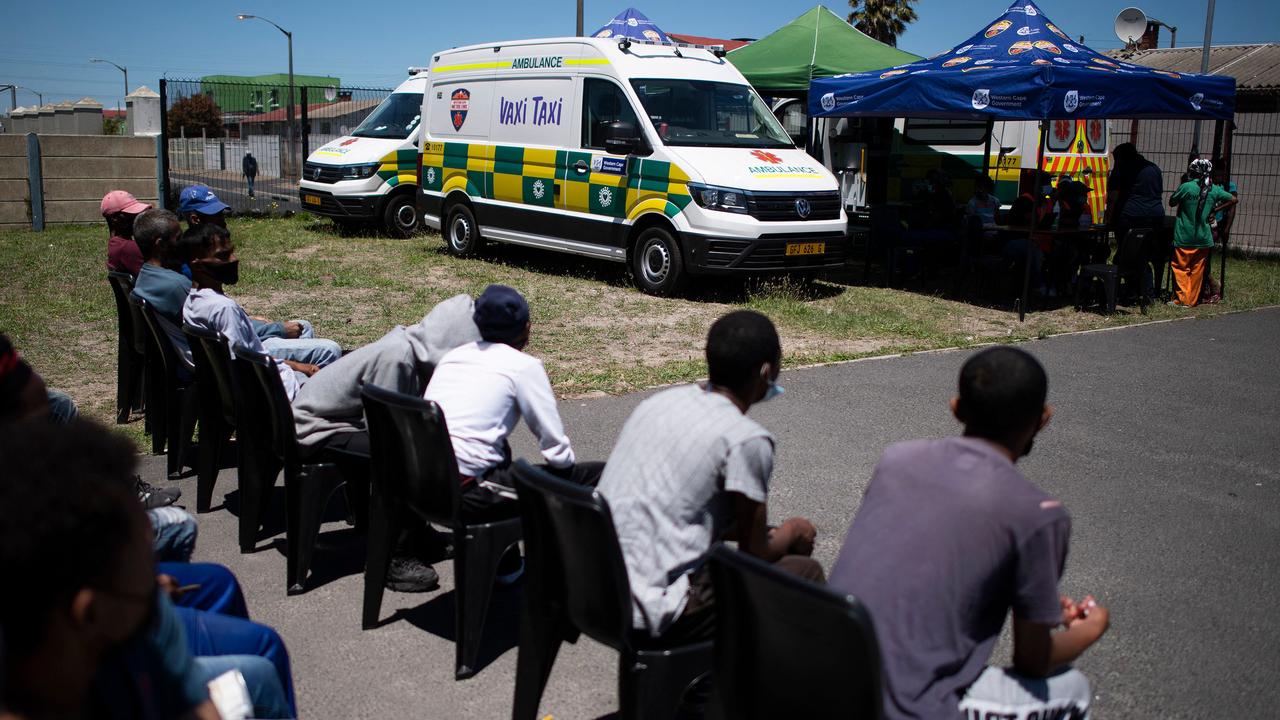
‘Looking at a horrible winter’
But in the UK, the same increase in hospitalisation rates was viewed much more pessimistically by scientists.
University of Edinburgh immunology and infectious disease Professor Eleanor Riley said that people in Britain were bound to come into contact with someone infected by Omicron in the coming weeks, “unless you are living like a hermit” – as it is spreading so quickly.
And that, in turn, would put added pressure on an already struggling health care system.
“Given that so many people are going to come across this virus, even a small proportion of a lot of people is a lot of people in hospital,” she told the BBC.
Modelling from experts at the London School of Hygiene and Tropical Medicine (LSHTM) made best-case and worst-case predictions for a fourth Covid wave factoring in the Omicron variant.
According to their results, a best-case scenario would see 24,700 people dying from Covid by the end of April. Worst case would see 74,900 deaths.
Possibly more worrying is the number of hospital admissions. The best case modelling sees an extra 175,000 people being admitted to hospital. The worst case sees almost half a million – 492,000 admissions.
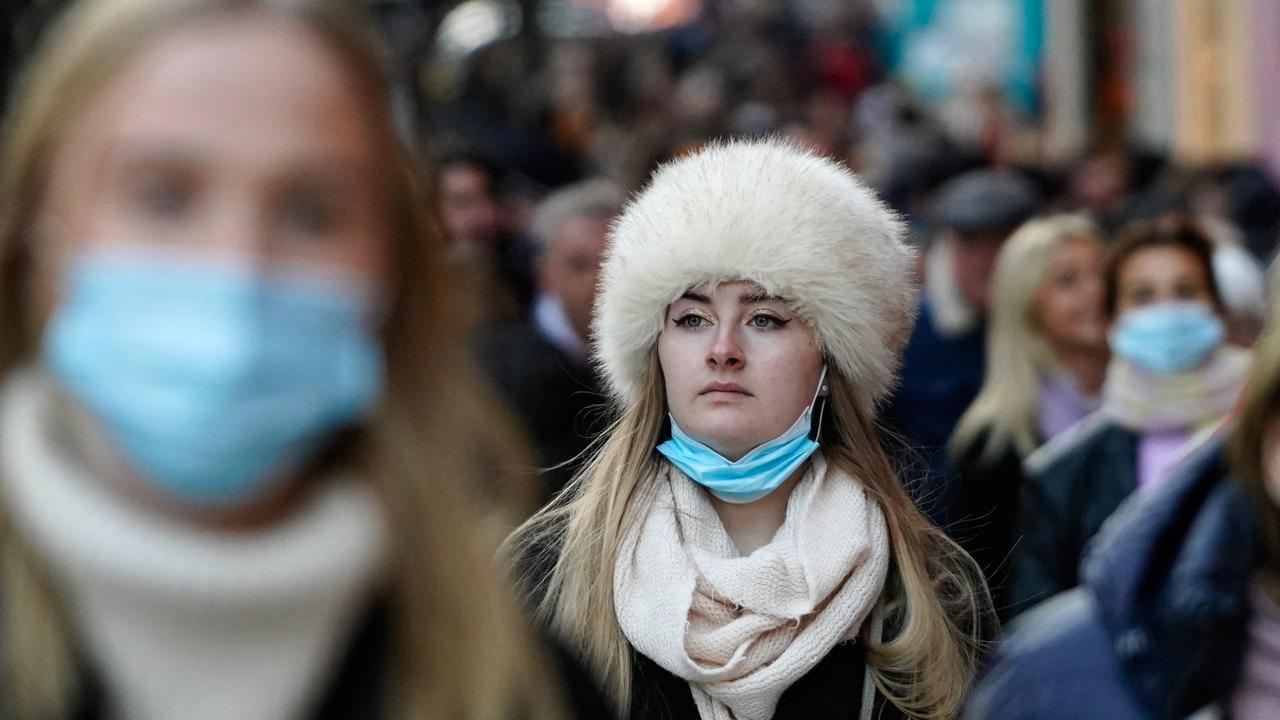
Currently, the report said, the number of people infected by Omicron is doubling every 2.4 days in England. And that’s in a country with high levels of vaccination.
One of the report’s authors Dr Nick Davies said Omicron was likely to be the dominant form of the virus in England by the end of the year.
“Based on what we’re seeing, we can expect there to be a large wave of Omicron in the UK,” he said.
“I think we are looking at a horrible winter,” said Dr Peter English, a retired consultant in communicable disease control for Public Health England.
“The number of mutations in the Omicron virus, compared to the virus used to develop vaccines, suggests that vaccines are unlikely to work as well. We do not yet know how significant a real-world effect this will have,” he told Science Media Centre.
“We know that the vaccines have held up pretty well against variants, with only a slight drop in efficacy – particularly of a single dose – against the Delta strain. That is somewhat reassuring, but we cannot rely on it.”
UK Wellcome Sanger Institute Covid-19 genomics director Dr Jeffrey Barrett said: “[Omicron] will spread very fast, even in countries that have a very high vaccination rate like the UK.”
Currently it is estimated that Omicron numbers are doubling roughly every three days. Yet vaccination rates for double-dosed adults in Britain are sitting over 90 per cent. And 32 per cent of those have had a booster shot.
“We haven’t seen that kind of rate of growth since I think the March 2020 time when the original virus was spreading in a totally naive population, when none of us really knew anything about it,” he told The New York Times.
Dr Barrett said even if the variant proves to cause less severe disease, “I don’t think any country should be gambling on that chance right now.”
In response, the UK government announced ‘Plan B’ to help deal with the Omicron upsurge.
People are being urged to work from home where possible, masks are back, vaccine passports are needed for entry to some venues and booster shots are being encouraged.

What about vaccines?
It has felt a bit like the world has constantly been chasing its tail throughout the pandemic, and Omicron is living up to that expectation.
Vaccination rates in Australia are currently at 89.1 per cent of adults nationwide. In NSW that is slightly higher at 93.1 per cent. Queensland has hit its target of over 80 per cent fully vaxxed early, hence its opening of the borders sooner than planned.
But after millions of Aussies have rolled up their sleeves for the good of the nation, it seems the next hot topic is set to be booster shots.
Professor Sarah Gilbert, who helped create the AstraZeneca vaccine, said regardless of which vaccine you are talking about, none of them are likely to perform well against Omicron.
“Until we know more, we should be cautious, and take steps to slow down the spread of this new variant,” she told the BBC.
An early estimate of the effectiveness of vaccines against the Omicron variant published in the UK shows they are significantly lower than the vaccines’ effectiveness against Delta.
It found simply having had your double-dose of a vaccine isn’t enough to provide good protection.

It suggested being double-dosed with the Pfizer vaccine gave you around 30 per cent protection against Omicron, and the AstraZeneca vaccine was not effective against it at all, reports Axios.
Seemingly, boosters are the key.
A booster shot of the Pfizer vax brings that percentage up to around 75 per cent if you originally were vaccinated with the Pfizer and 70 per cent if your first vaccine was AstraZeneca.
However, these statistics are all based on small studies over a limited time period, since this variant burst upon the world less than a month ago.
“It will be a few weeks before [vaccine] effectiveness against severe disease with Omicron can be estimated,” the report said.
“The duration of restored protection after mRNA boosting is not known at this juncture.”
Pharmaceuticals rush to amend jabs
As soon as Omicron hit the scene, pharmaceutical companies began testing to see how their vaccines stood up to the new variant.
Moderna said it would “rapidly advance an Omicron-specific booster candidate,” National Geographic reported.
Johnson & Johnson said it was “pursuing an Omicron-specific variant vaccine”.
Pfizer said it would have an Omicron vaccine ready by March.

The mRNA type vaccines will be easier to modify, with the process only taking a few months, according to Yale Medicine infectious disease specialist Dr Onyema Ogbuagu.
“It’s not creating a new vaccine. It’s more like taking a dress and hemming it to give it a new length,” he told National Geographic.
The process should eventually become similar to the seasonal flu shot. Each year, the World Health Organisation (WHO) uses data to make an educated guess about which flu strains will dominate and a flu vaccine is made to target those strains. Large clinical trials aren’t needed in this model.
Are we all just overreacting?
There are some who see Omicron as a good thing; a variant that causes milder disease which may give the world natural immunity against Covid-19.
However, WHO’s health emergencies program chief Michael Ryan warned against letting Covid fatigue cloud the potential dangers of Omicron.
“If [new variants] are allowed to spread unchecked, even though they are not individually more virulent or more lethal, they just generate more cases, they put pressure on the health system and more people die. That’s what we can avoid,” he said.




